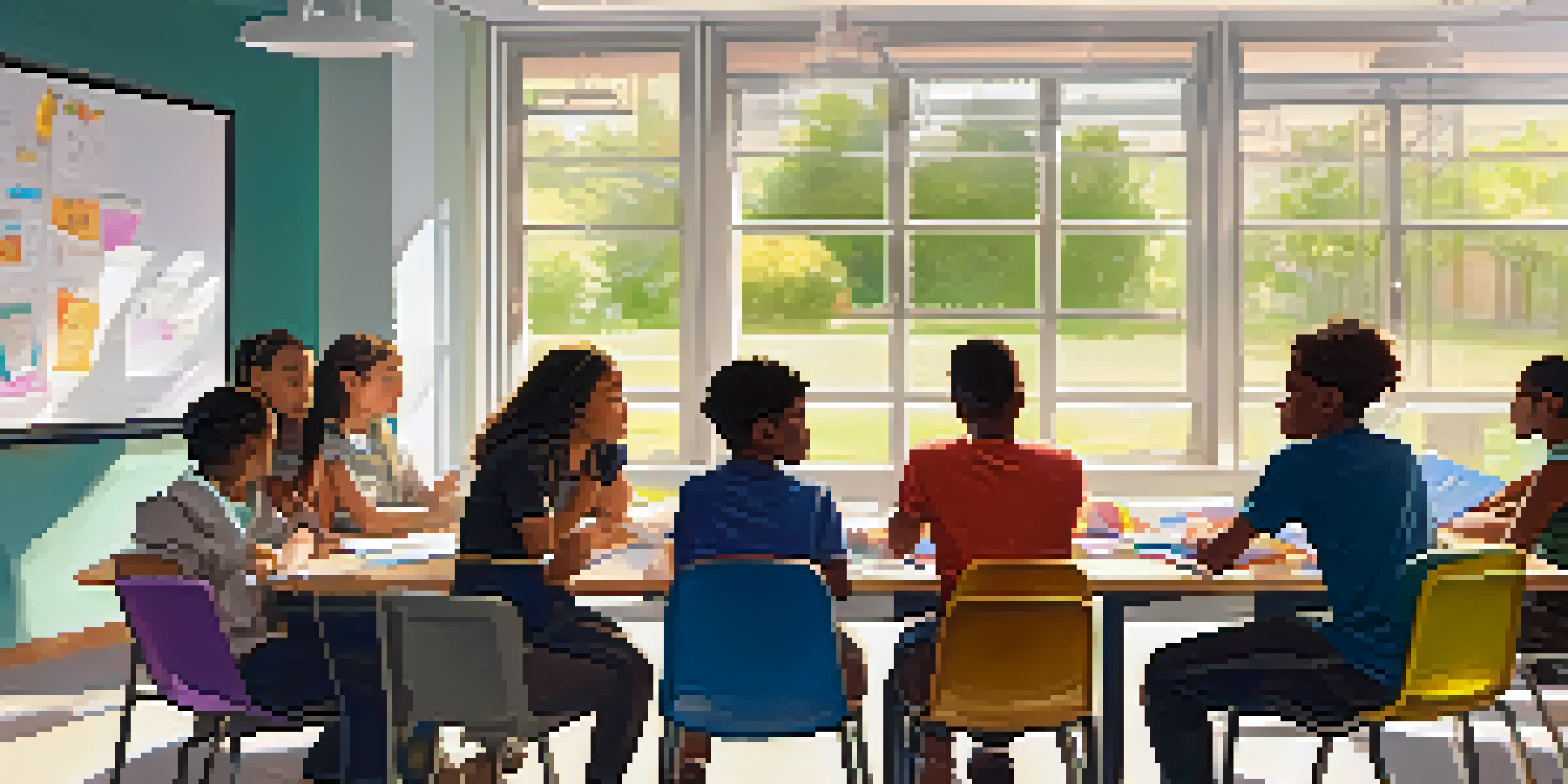Implementing CBT to Foster Critical Reflection in Students

Understanding Cognitive Behavioral Techniques (CBT)
Cognitive Behavioral Techniques (CBT) focus on changing negative thought patterns. At its core, CBT helps individuals recognize the relationship between their thoughts, emotions, and behaviors. By addressing these connections, students can become more aware of how their thinking affects their learning and decision-making.
The greatest weapon against stress is our ability to choose one thought over another.
For instance, a student struggling with math may think, 'I’m terrible at this,' which can lead to anxiety and disengagement. CBT encourages reframing this thought to something more constructive, like 'I can improve with practice.' This shift not only enhances their self-esteem but also fosters a growth mindset essential for learning.
In educational settings, implementing CBT can empower students to take ownership of their learning process. By teaching them to challenge negative thoughts and replace them with positive affirmations, educators can create a supportive environment that promotes critical reflection.
The Role of Reflection in Learning
Reflection is a powerful learning tool that allows students to think critically about their experiences. It encourages them to analyze what they learned, how they felt during the process, and what they might do differently next time. This cycle of reflection helps solidify knowledge and promotes deeper understanding.

For example, after a group project, students can reflect on their contributions and teamwork dynamics. By discussing what went well and what could be improved, they develop not only academic skills but also interpersonal skills like communication and collaboration.
CBT Enhances Student Learning
Cognitive Behavioral Techniques empower students to challenge negative thoughts, fostering a growth mindset essential for academic success.
Integrating reflection into the learning process can lead to greater student engagement. When students understand the value of reflecting on their experiences, they are more likely to invest time and effort into their assignments, ultimately leading to improved academic performance.
Creating a Safe Space for Reflection
To foster critical reflection, it's crucial to create a safe and supportive classroom environment. Students must feel comfortable sharing their thoughts and feelings without fear of judgment. This psychological safety encourages open dialogue, allowing students to explore their ideas freely.
We do not learn from experience... we learn from reflecting on experience.
Teachers can promote this environment by establishing ground rules for discussions, such as respect and confidentiality. By modeling vulnerability and sharing their own reflections, educators can show students that it’s okay to be imperfect and to learn from mistakes.
When students perceive their classroom as a safe space, they are more likely to engage in reflective practices. This openness not only enhances their learning experience but also builds a sense of community within the classroom.
Incorporating CBT Techniques into Classroom Activities
Integrating CBT into classroom activities can be as simple as using guided reflections after lessons or projects. Teachers can ask students to journal about their thoughts and feelings regarding their work, fostering self-awareness and critical thinking skills. This practice encourages students to articulate their learning journeys.
Another effective technique is the use of thought records, where students track their thoughts, emotions, and outcomes in various situations. By analyzing these records, they can identify patterns and triggers, which helps them apply CBT principles to real-life scenarios.
Reflection Deepens Understanding
Encouraging students to reflect on their experiences solidifies learning and promotes critical thinking skills.
Incorporating these techniques into everyday learning not only makes reflection a habit but also equips students with tools to manage their emotions and thoughts effectively, leading to more productive learning experiences.
Encouraging Peer Reflection and Feedback
Peer reflection and feedback are invaluable components of the learning process. When students share their reflections with each other, they gain new perspectives and insights that can deepen their understanding. This collaborative approach fosters a sense of community and accountability among students.
For instance, after completing a project, students can pair up to discuss their reflections and provide constructive feedback. This not only enhances their critical thinking skills but also builds their ability to communicate effectively and empathetically.
By encouraging peer interactions, educators can create a dynamic learning atmosphere where students learn from one another. This approach not only enriches their educational experience but also prepares them for collaborative work environments in the future.
Assessing the Impact of CBT on Student Reflection
To understand the effectiveness of CBT techniques in fostering reflection, educators should assess their impact on student learning. This can be done through surveys, reflective journals, or even informal discussions. Gathering feedback helps educators adjust their approaches to better meet their students' needs.
For example, after implementing CBT strategies, teachers could ask students to rate their confidence in reflecting on their learning. This quantitative data, paired with qualitative reflections, provides a comprehensive view of students' growth and areas for improvement.
Peer Feedback Builds Community
Engaging in peer reflection and feedback fosters collaboration and accountability, enriching the overall educational experience.
Assessment isn't just about grades; it's about understanding how well students are internalizing critical reflection skills. By continuously evaluating and refining their methods, educators can ensure that their teaching remains effective and impactful.
Conclusion: The Future of Learning through Critical Reflection
Implementing CBT to foster critical reflection in students can transform the educational experience. By equipping students with tools to challenge their thinking and engage in meaningful reflection, educators are preparing them for success beyond the classroom. This approach nurtures lifelong learning and adaptability.
As we move further into an era that values critical thinking and emotional intelligence, integrating these practices will be essential. Students who can reflect critically will not only excel academically but also thrive in various aspects of life.

Ultimately, the goal is to create reflective thinkers who can navigate challenges with resilience. By prioritizing CBT techniques in education, we can cultivate a generation of learners who are equipped to face the complexities of the world head-on.